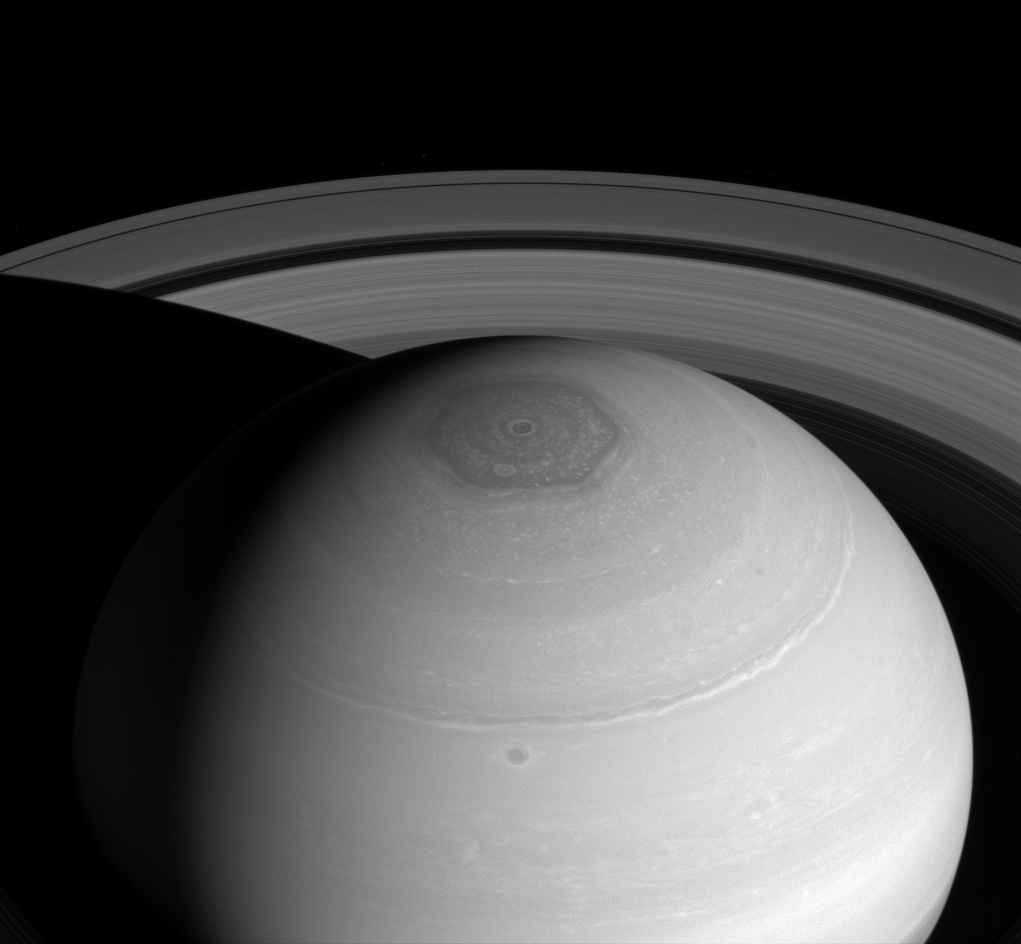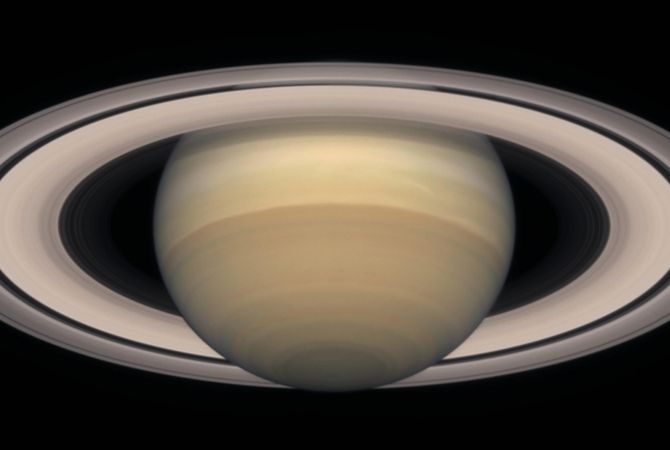

I've always wanted to see the Rings, close up – close enough to file my nails on 'em. They must be the gaudiest sight in the System.
— The Rolling Stones, Robert A. Heinlein
Saturn is the most iconic planet we know. Its image is a symbol for all things astronomical.

Saturn is not very bright, and it moves through the fixed stars slowly, going around the sky no more than two or three times in a human lifetime. So it's been given to an elderly god, Zeus's father Cronos, called Saturn in Roman mythology. Saturday is Saturn's day, and this time you don't even need to cross from Norse to Roman mythology to see it.
Because Saturn is dim and moves slowly, as if heavily burdened, alchemy gave it the metal lead.
Galileo's primitive little telescope could see that Saturn wasn't properly round, but couldn't make out details. It took several years to pick them out. Was there a pair of moons flanking it? No, they looked sort of like jug handles. And why did the odd features come and go over the years? Eventually, astronomers improved their telescopes and could see the rings for what they were. They come and go because sometimes they are edge-on to us and so nearly invisible.
Saturn's largest moon, Titan, has figured in science fiction more than Saturn itself. After all, it's as big as a planet and has its own atmosphere, making it attractive to writers wanting to settle it with natives or colonists.
We got our first good look at the Saturnian system from the Pioneer and Voyager fly-bys. The system was explored for a dozen years by the Cassini probe, which also landed the Huygens probe on Titan.
On to Uranus and the Centaur Belt
Back to Jupiter
Return to Gallery of Planets
Return to Introduction to Essays
Return to Wind Off the Hilltop
Copyright © Earl Wajenberg, 2017